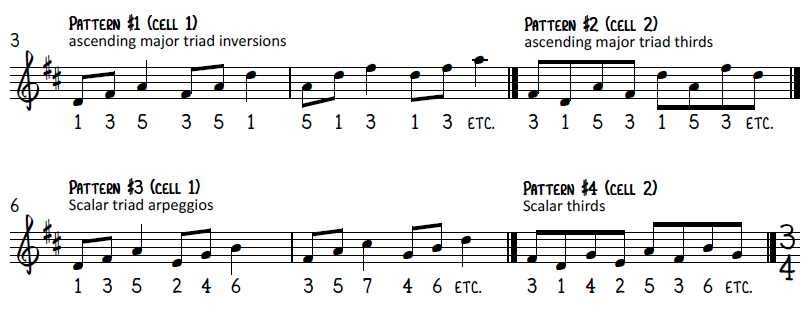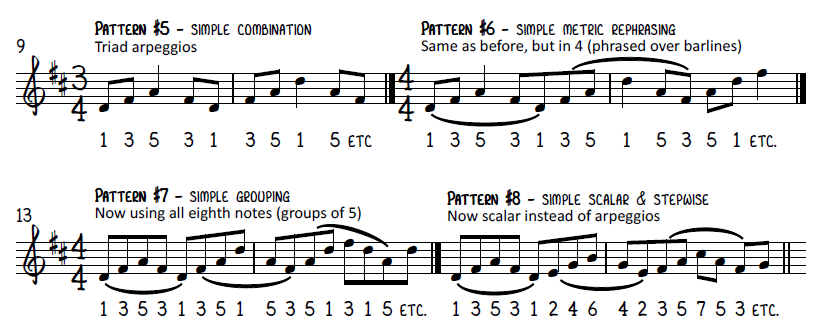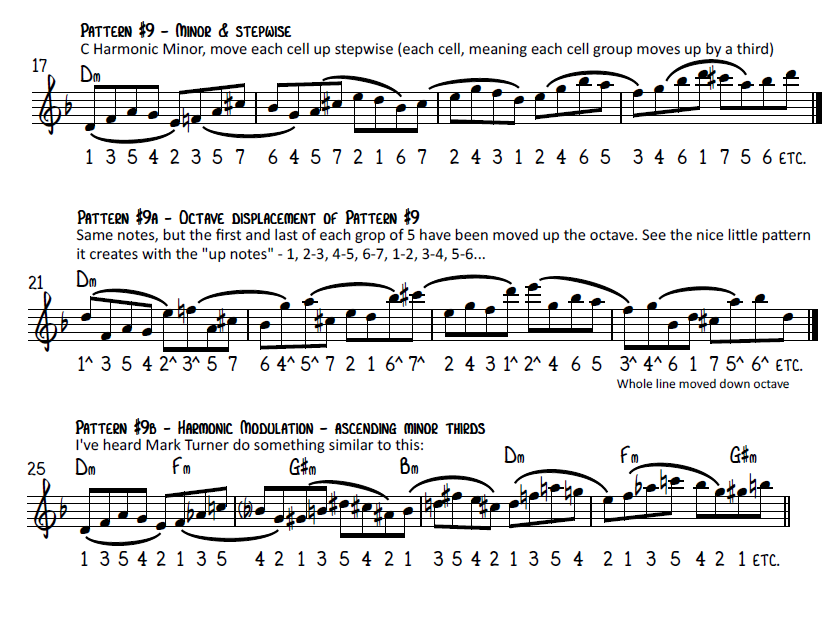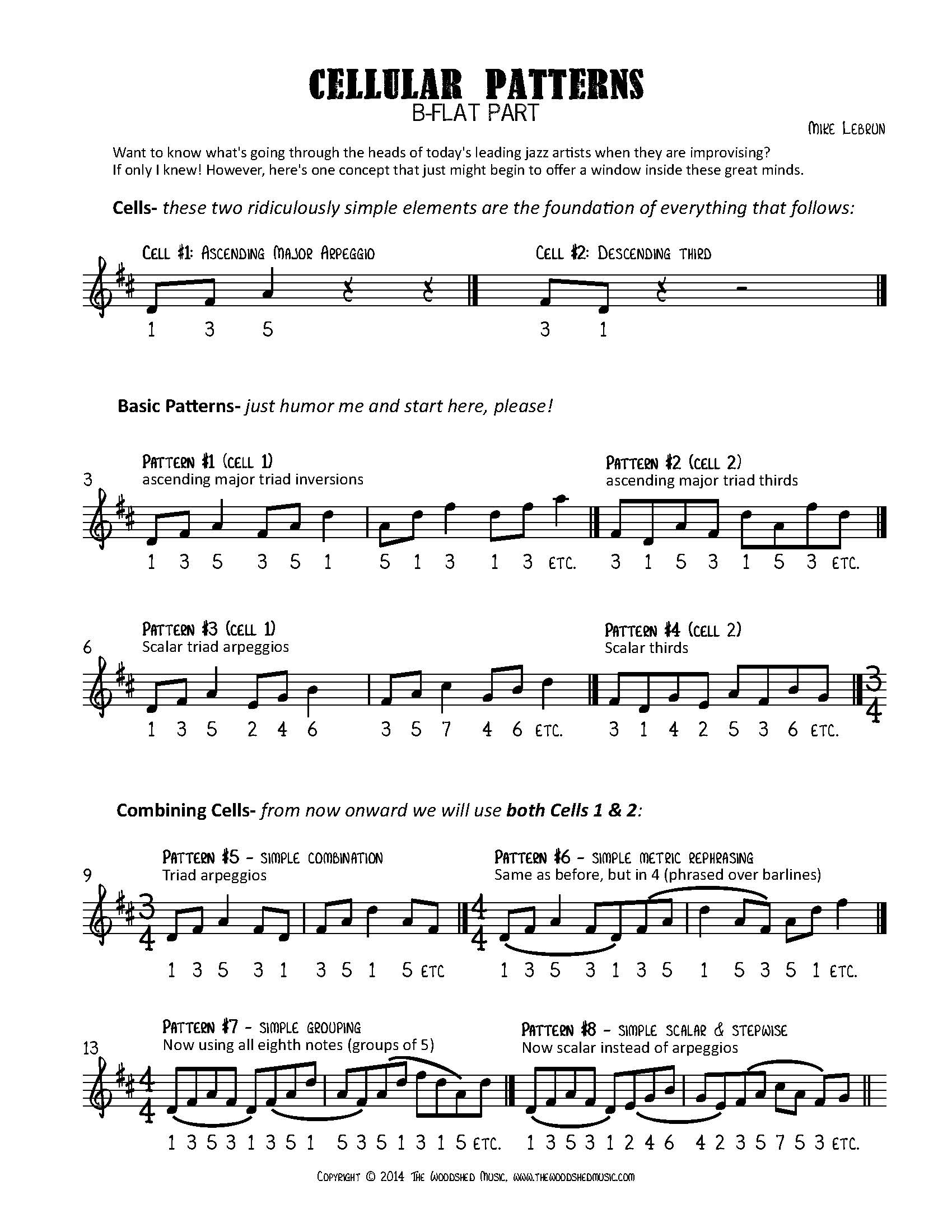Maybe I’m just a math geek, but I love exploring patterns on my horn. A plethora of jazz literature is available on scalar/pattern studies (Jerry Coker, Oliver Nelson, David Baker, Slonimsky, etc.), each offering a veritable buffet of patterns for you to get under your fingers and have in your back pocket. You COULD just open one of these books, flip to any page, read the lick, and transpose into all 12 keys, and repeat. But for me, these books just collect dust on my shelves. Meanwhile I’m practicing patterns almost every day.
In my last post I explored why patterns, when used thoughtfully and judiciously, are essential for the improvising musician. …
But how can you form your own patterns? Here’s a framework.
Patterns are composed of cells, or small, mathematically constructed groups of notes.
Coltrane was famous for his exploration and application of various cells.
Here are the most common variables I toy with:
- Cell-construction
- Scale
- # Notes
- Directionality
- Interval
- Cell-combination
- Scale-relationship
- # Notes
- Directionality
- Interval
- Cell-application
- Harmony
- Time Signature
Let’s walk through an example:
Here are 2 basic cells. These 2 ridiculously simple elements form the foundation for everything that follows.
Now let’s construct some basic patterns. Just humor me and start here, please!
Combining Cells: From now onward we will use both cells 1 & 2 together to create increasingly complex patterns.
Now you’re ready for the fun stuff!
Once you’ve wrapped your head around the basics outlined in patterns 1-8 above, you can start playing around with the 2 cells in more interesting ways. I’m going to take the same cells, modulate to minor, and iterate on just one idea (you can think of pattern #9 as the base pattern):
Here’s a clip of me applying that last pattern over the tune Softly as in a Morning Sunrise. Notice how you can imply the harmony of minor chords moving in ascending minor thirds by playing this line:
Another way you can use patterns in your improvised solos is to actually move what you are playing in real time with the changes. Let’s get a fresh pattern and see how this works:

Now let’s apply it over the first 4 bars of Green Dolphin Street:
It gets a lot tougher when the changes start moving faster. Here’s one way to kind of make the same pattern work over Confirmation:
Now I know I’d be hard pressed to compute this pattern in real-time, so we can use the same idea, but simplified, to create a melody or motive. Here’s something similar to what Chris Potter might play if here were using our cells:
And finally…
as a way to practice this more advanced concept, try starting with the 4 bars above, then improvising over the rest of confirmation by building off these ideas. Here’s a clip of me taking a shot at it!
Cellular Patterns Practice Sheet (PDF) – Bb











Your pattern 9b is very similar to Mark Turner’s warm up here:
Thanks Lacey, that’s actually the exact clip I was thinking of. Nailed it!